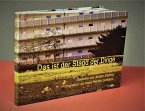This photo book serves as a compelling firsthand visual account of my presence and active participation in the Justice for Trayvon Martin protest, which occurred on July 16th, 2013, outside the U.S. embassy. Its purpose is to ensure that the UK's involvement in the Justice for Trayvon demonstration is documented and preserved in accessible libraries rather than being confined to commercial or private archives. The book is thoughtfully divided into three sections, each exploring a different aspect: Section One: Perspectives on The Death of Trayvon Martin and Racism This section delves into the tragic event of Trayvon Martin's death and examines the broader issue of racism. It provides diverse perspectives and insights, fostering a deeper understanding of the complex dynamics at play. Section Two: Visual Activism and Iconic Protest Images Here, the focus shifts to visual activism and the iconic images captured during the protest. The photographs, taken with basic digital cameras and cell phones, are intentionally presented without watermarks or captions. This decision was made to emphasize the importance of the emotions and experiences conveyed in the images, prioritizing their authenticity over technical perfection. Section Three: Race and Policing in the UK The final section explores the topic of race and policing within the UK context. It sheds light on the broader implications of racial discrimination and its impact on law enforcement practices. By examining this issue, the book aims to contribute to a more nuanced understanding of the systemic challenges faced by marginalized communities. Throughout the book, I aim to highlight the significance of interpreting the political dress practices of black protestors. By doing so, it becomes evident how the black body's role in civil rights protests can influence our perception and comprehension of these demonstrations. The inclusion of feeling and emotion within photographic theory and practice is vital in engaging viewers as secondary witnesses, allowing them to develop an emotional connection with the events captured in the photographs. The visual experience goes beyond the purely visual, resonating with our other senses and enhancing our overall perception. In conclusion, this photo book acknowledges the profound impact of political dressing and photography on participants in anti-racism and anti-police brutality demonstrations. It recognizes the power of political signage as a means for individuals to assert control over their public appearance and narrative. By utilizing political signage as a form of institutional critique, protestors can present a narrative that is resistant to revision or dismissal by detractors or historical revisionists with a right-wing agenda. Photography serves as a crucial medium for capturing and preserving these narratives that many would otherwise seek to dismiss or erase.Through this photo book,contributes to the ongoing dialogue on racial justice, activism, and the power of visual storytelling. It is the author and photographers intention to inspire reflection, empathy, and a deeper understanding of the experiences and struggles faced by marginalized communities in their pursuit of justice.








